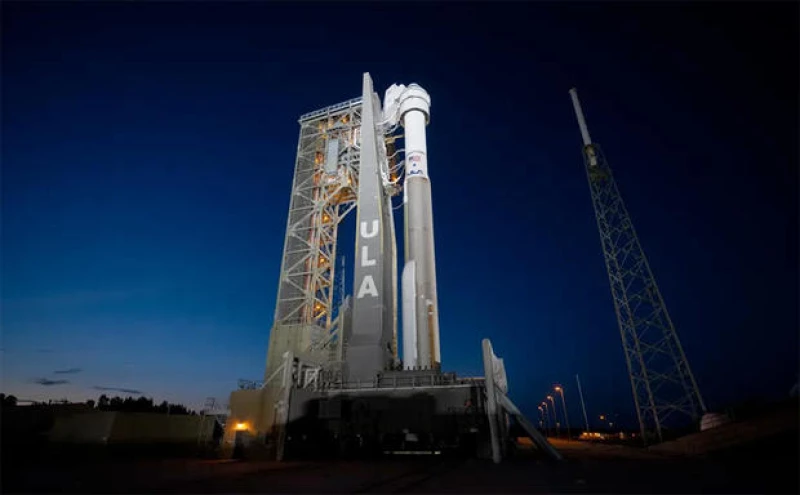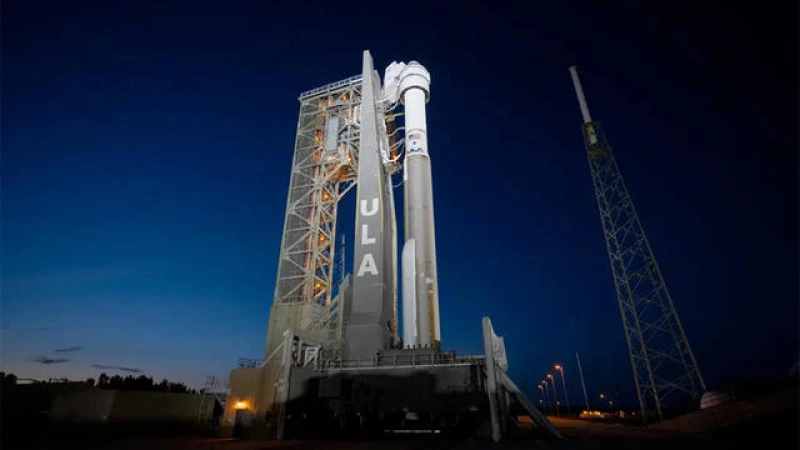Following a thorough analysis of data subsequent to a launch scrub on Monday, United Launch Alliance managers have made the decision to transport the Atlas 5 rocket carrying Boeing's Starliner astronaut ferry ship back to its processing facility to replace a suspect valve, resulting in a delay for another launch attempt until at least May 17, as reported by NASA in a blog post on Tuesday.
The new target for launch from Florida's Cape Canaveral Space Force Station is now set for 6:16 p.m. EDT a week from Friday. This adjustment will provide engineers with additional time to conduct the necessary valve repair while aligning with the U.S. Eastern Range launch schedule, which manages all rocket flights from the East Coast and ensures a suitable rendezvous with the International Space Station.

The Starliner, Boeing's delayed counterpart to SpaceX's Crew Dragon spacecraft, was grounded on Monday just two hours before its scheduled launch for its inaugural piloted test flight to the space station. Onboard were NASA astronauts Barry "Butch" Wilmore and Sunita Williams.
ULA engineers could have carried out a procedure to force the valve in place and likely would have done so for a normal satellite launch. But conservative flight rules in place for the Starliner flight ruled out any changes to the "fueled state" of the rocket while the astronauts were on board. As a result, the launch was scrubbed.
The valve in question was designed to "self regulate," opening and closing as needed to bleed off gaseous oxygen buildups in the Centaur's liquid oxygen tank. It was certified for 200,000 open-close cycles.
"The oscillating behavior of the valve during prelaunch operations ultimately resulted in mission teams calling a launch scrub on May 6," NASA said in a blog post. "After the ground and flight crew safely egressed from Space Launch Complex-41, the ULA team successfully commanded the valve closed and the oscillations were temporarily dampened.
"The oscillations then re-occurred twice during fuel removal operations. After evaluating the valve history, data signatures from the launch attempt and assessing the risks relative to continued use, the ULA team determined the valve exceeded its qualification and mission managers agreed to remove and replace the valve."
The ULA team plans to haul the Atlas 5 and its mobile launch platform back to the nearby Vertical Integration Facility on Wednesday. After the valve is replaced and tested, the rocket will be moved back to the pad for normal pre-launch preparations.
NASA's Investment in Space Transportation
Following the retirement of the space shuttle, NASA made a significant investment in the development of two crew transport craft. Boeing's Starliner and SpaceX's Crew Dragon were awarded contracts worth $4.2 billion and $2.6 billion, respectively.
Boeing's Starliner has faced delays due to technical issues, costing the company over $1 billion to address. In contrast, SpaceX's Crew Dragon has successfully completed 13 flights, carrying 50 astronauts, cosmonauts, and civilians into orbit, with 12 missions to the space station.
Despite Boeing facing scrutiny for problems with its 737 airliners, the issues with the Starliner program are unrelated and not a result of hardware problems. The program, though behind schedule, remains a separate operation from the company's commercial airliner concerns.







